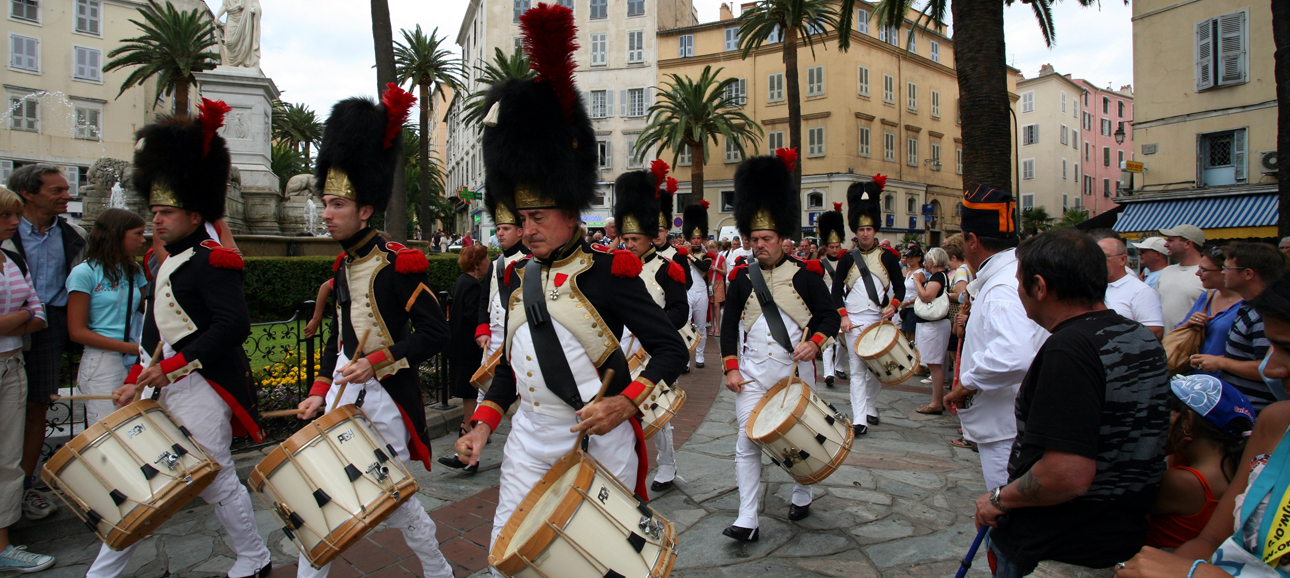 Corsica Traditional Music
Corsica Traditional Music
From religious chants to polyphonies, the musical journey of Corsica has transformed over the ages but the traditional value has remained almost the same.
While visiting Corsica, you will find instance of a few musical performances which are described below –
Polyphony
 Polyphony or multiple voices denotes to singing a capella i.e. without instruments. Around 8-9 people sing together in perfect harmony, as if to celebrate the indigenous music from unremembered past.
Polyphony or multiple voices denotes to singing a capella i.e. without instruments. Around 8-9 people sing together in perfect harmony, as if to celebrate the indigenous music from unremembered past.
After revival in 1970’s, Polyphony is a cultural part in Corsica and there are around eighty groups in the island. After 3 parts of Capella, “voice of the angels” appears.
Lead provided by Secunda, ornamentation provided by terza and bassu are the signature styles.
Nanna, Paghjella and Madrigale are some examples of Polyphony.
Religious Chant
 Religious Chant is also called sacred polyphony which is celebrated in Corsica during funerals, death occasions and mourning.
Religious Chant is also called sacred polyphony which is celebrated in Corsica during funerals, death occasions and mourning.
Although some find these songs sad and morbid, these songs are expression of eternal hope.
If you visit during Holy Week, you will find many groups singing lament for Christian Mass.
Secular Song
 Although often mentioned as synonymous of Polyphony, Paghjella or secular songs are profane songs which are sung in expression of strong emotions such as satire, seduction and lamentation. These songs have periodical accent in complementation of particular duration of notes.
Although often mentioned as synonymous of Polyphony, Paghjella or secular songs are profane songs which are sung in expression of strong emotions such as satire, seduction and lamentation. These songs have periodical accent in complementation of particular duration of notes.
Here secunda initiates the song followed by bassu and terza’s entry. According to micro-regions, this song form has many variants. Although they are mostly sung by men, the Cuntrastu is sung by both male and female.
Filastrocca, fola and stalbotoghju also include the female polyphonies.
Lay Brotherhoods
 The Lay Brotherhoods or cunfraternita have been offering religious chanting as social services since the Middle Age.
The Lay Brotherhoods or cunfraternita have been offering religious chanting as social services since the Middle Age.
According to special events on Christian calendar, the Lay Brotherhoods sing polyphonies for Masses, funerals, Saint’s days and on feast days.
There are also processional songs along with pagan rituals. Visit Castagniccia or Casinca to visit the headquarters or chapels of the brotherhoods.
Musical Instruments Used In Corsican Music
 Unlike other Mediterranean regions, Corsica has percussion and string instruments which have been utilized splendidly by musician groups like A Filetta, Caramusa, Tavagna, A Cumpagnia etc.
Unlike other Mediterranean regions, Corsica has percussion and string instruments which have been utilized splendidly by musician groups like A Filetta, Caramusa, Tavagna, A Cumpagnia etc.
While Caramusa comprises of artists and researchers playing traditional Corsican instruments like the Mandolin, A Cumpagnia comprises of artists from Pigna village. In this context, we should also mention Ange Lanzalavi with his trio playing Mandolin with a twist of traditional, modern and classical theme.
Coming to traditional instruments, Caramusa is worth mentioning as this bagpipe is made of wood, reed and leather.
Cetera is a cittern or cithern with 8 chords (16 strings) that looks like lute and is originated from Tuscan.
Alan Mannerini in Pigna has even manufactured Cetera Guitara which has shape of cetera and guitar stem. The strings are made of metal and nylon.
Other instruments are –
- Zampugna –bull, cow or goat horn set with reed
- Urganettu –diatonic accordion
- Tromba –rolled Chestnut bark strip into spiral, added with reed
- Timpanu –triangle
- Sunaglieri –bells of mules
- Riberbula –Dating back to Iron Age, type of Jew’s harp
- Pivana/pifana –melodious fife made from goat horn
- Pirula –reed recorder
- Cialamedda –reed instrument with olive, fig or box wood body
 Corsica Traditional Music
Corsica Traditional Music